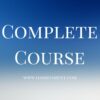Description
RES 861 Module 2 Assignment, Summary of Articles
With the construction of the 10 Strategic Points for your dissertation study. You began to draft the literature review (Point 2) of the study to illuminate an identified gap in the literature to be filled by your dissertation study. While the literature review ultimately requires more than simply summarizing studies in some logical order. Summarizing and paraphrasing are the beginning points of a solid literature review. In this assignment, you will summarize several studies from Point 2 (Literature Review) of your 10 Strategic Points document. The references to studies related to your dissertation topic that you added to the Literature Review Resources assignment in the final week of RES-850. From those summaries, you will describe how the studies form the gap that your dissertation will fill. Remember, to illuminate a gap in the research, the articles surveyed must ….published within the last 5 years
General Requirements:
Use the following information to ensure successful completion of the assignment:
- Refer to the draft of the 10 Strategic Points that you developed for your dissertation study in Topic 5 of RES-850. You may also use a more recent version of this document if one is available.
- Refer to the list of 10 references to studies related to your dissertation topic that you added to the Literature. Review Resources assignment in the final week of RES-850.
RES 861 Module 2 Discussion Question 1
Refer to the two studies you addressed in the second discussion question in Topic 1. Did the studies use inductive or deductive research methods? Explain. Why did the researcher choose induction or deduction for the study? (Note: you may have to infer this from the information given to justify the research design and method) Do you believe the choice of induction or deduction was correct for the study? Why or why not?
RES 861 Module 2 Discussion Question 2
Refer to the two studies you addressed in the second discussion question in Topic 1. What data collection methods, instruments, samples, or settings were NOT used? Why do you believe the researchers chose to avoid these methods, instruments, samples, or settings? What potential gaps do these omissions create? What specific gaps did the researcher identify as recommendations for future studies? How does this information inform your dissertation study?
![]()


